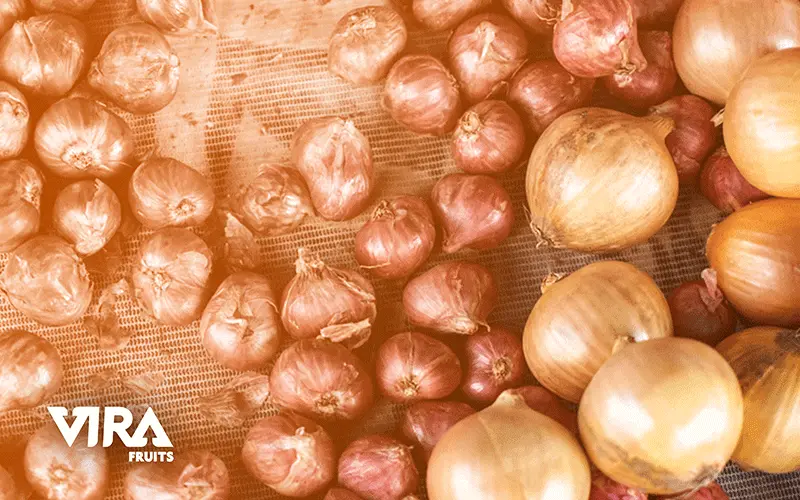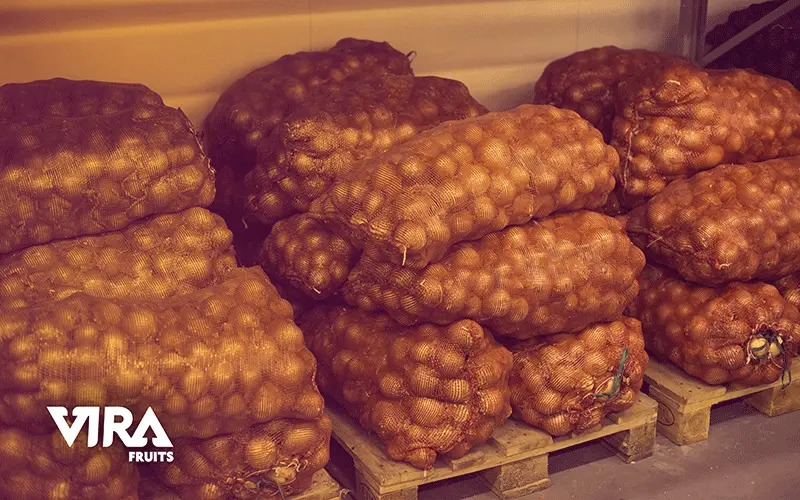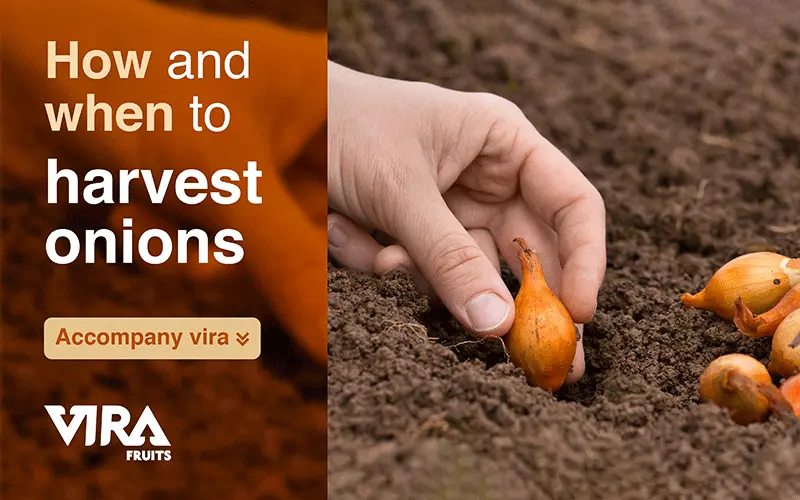The process of harvesting onions is easy, and it does not differ based on their type. Therefore, onion exporters are mostly expected to be sucessful. In other words, the process applies to all kinds. Once the bulbs fatten up by midsummer, you can harvest individual onions to use as necessary. Signals and signs of harvesting time is flopped over of the leaves on onion plants, which happens at the neck and by late summer or early fall. When these signs appear, it means that growth is over and it is time for storing.
The weather of the day you harvest is an important factor; it is best to be cloudy so that the bulbs damages caused by the sun are reduced. A digging fork is the simplest and the most recommended tool to use in order to harvest large quantities of onions from the ground.
You must grasp the onion stalk gently at the neck and pull it upwards, avoiding tearing the roots, stalks, or bruising the bulbs because any damage to the onion will shorten its storage life. If you like, you can spread them out, so the soils clinging to the bulbs dry before bringing them inside. In case the weather is sunny, pay attention to spread them in a dry and shady area.

How and when to cure onions
The outer skins of onions must be dried thoroughly before they are stored. This is called ‘curing.’ In a greenhouse, hoop house, or cold frame, onions can be dried on racks or layers of newspaper. Alliums such as shallots and garlic can also be treated in the same way.
In order to save onions from mold, moisture, or rot, you need to spread them widely and with a great distance so that there is enough space for air to circulate. Onions may need two weeks for drying completely. Whenever the leaves are completely dried up, and the roots appear wiry and dry, they are ready for storage. It is also important to remove any loose skin and roots at this time.

How and when to store onions
The onions should, at this point, be dried with their tops still attached, so you can trim them now that they are fully dried and cured. At least one inch should be left from the top of the onion. You should keep in mind that if you cut off the green top of the onion before drying, you ruin the storage step. But on the other hand, cutting it after drying or avoid cutting them at all is good for storing. Both ways will do, and there is no superior over the other.
The onions should be brought inside when completely dried. In order to avoid condensation on the bulbs, the bulbs should be slowly adjusted to the lower temperature difference. If you want to store onions for the long term, you must bring them to an ideal condition. Ideally, onions should be stored at 32oF or 0oC for long-term storage. Onion storage should be kept at a humidity level of 65-75%.
When humidity is too high, roots grow, while high temperatures promote sprouts. High temperatures, as well as high humidity, combine to prevent rotting and make products less effective. Since the light speeds up the rate of spoilage, it is better to keep storage onions away from light and in the dark.
Last but not least, take into account the duration of the variety’s shelf life under optimal storage conditions. In general, sweet onions last about three months, while storage onions last between 3-9 months.
Secrets about curing, storing, and harvesting onions
- DON’T harvest your plants until half of them are over.
- To make onions last longer, keep them dry, dark, and well aired.
- Dry the roots right away after harvest
- Trim your onions to see which ones you will have to use first
- The watering should be stopped before harvesting onions
- Save tiny onions for spring planting.
- Cure your onions in advance so they will last through winter
